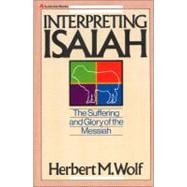
| CONTENTS | |
| Preface | |
| Acknowledgments | |
| Introduction | |
| Part I | |
| Introductory Matters | |
| 1. The World of Isaiah | |
| 2. The Authorship of Isaiah | |
| 3. The Structure of Isaiah | |
| 4. The Poetry of Isaiah | |
| Part II | |
| An Analysis of Isaiah | |
| 5. Opening Messages and the Call of Isaiah (1:1–6:13) | |
| 6. The Rule of Assyria and the Messiah (7:1–12:6) | |
| 7. Oracles Against the Nations (13:1–23:18) | |
| 8. The Apocalypse (24:1–27:13) | |
| 9. Book of Woes and Restoration (28:1–35:10) | |
| 10. Historical Interlude (36:1–39:8) | |
| 11. Deliverance From Babylon (40:1–48:22) | |
| 12. The Ministry of the Servant of the Lord (49:1–57:21) | |
| 13. Ultimate Blessing for God's People (58:1–66:24) | |
| Part III | |
| Theological Emphases | |
| 14. Christology | |
| 15. Eschatology | |
| Bibliography |
The New copy of this book will include any supplemental materials advertised. Please check the title of the book to determine if it should include any access cards, study guides, lab manuals, CDs, etc.
The Used, Rental and eBook copies of this book are not guaranteed to include any supplemental materials. Typically, only the book itself is included. This is true even if the title states it includes any access cards, study guides, lab manuals, CDs, etc.
Excerpted from Interpreting Isaiah: The Suffering and Glory of the Messiah by Herbert M. Wolf
All rights reserved by the original copyright owners. Excerpts are provided for display purposes only and may not be reproduced, reprinted or distributed without the written permission of the publisher.